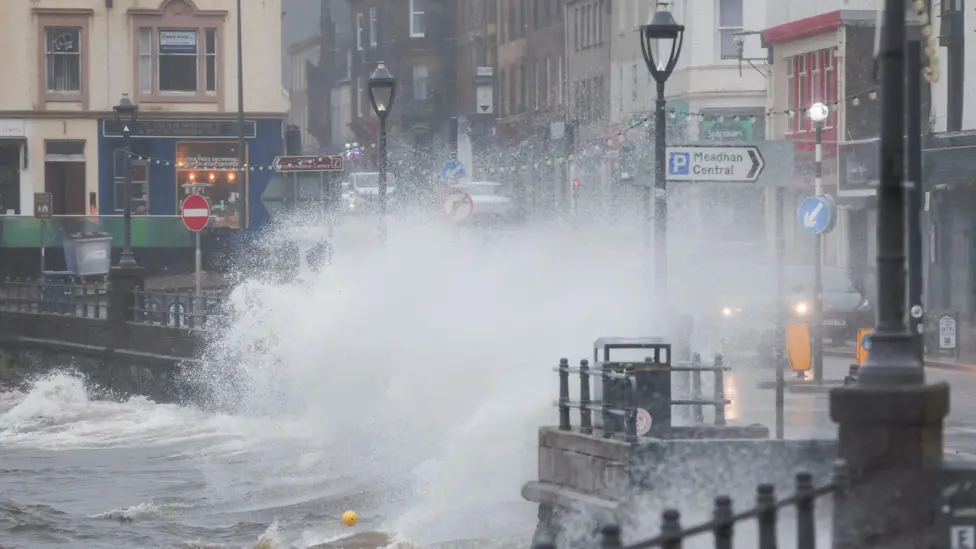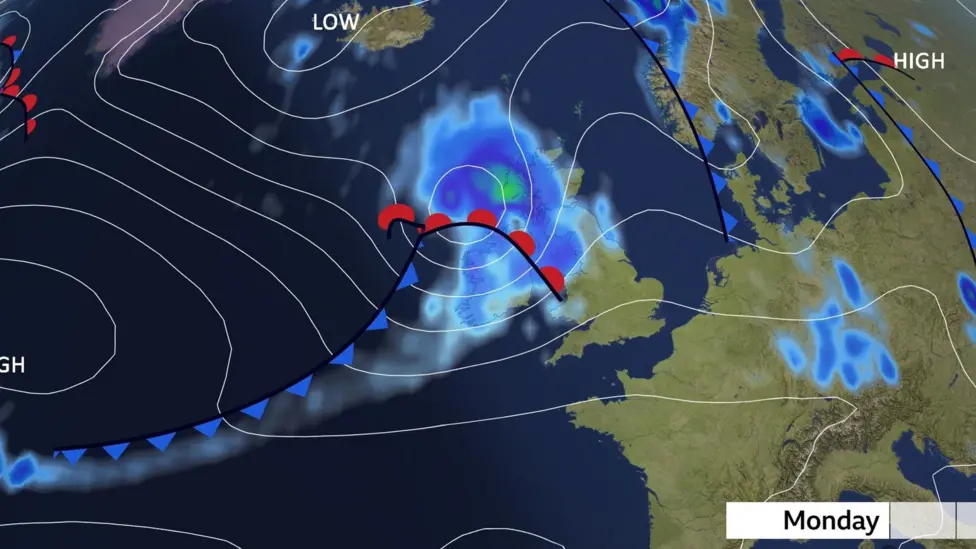Storm Floris: What should UK residents expect in coming days?

Storm Floris: What UK Residents Need to Know About the Incoming Wind and Rain Warning
Storm Floris, the sixth named storm of the 2024/25 season, swept through the United Kingdom with devastating winds clocking up to 90mph, triggering amber weather alerts, cancelling travel services, and plunging tens of thousands of homes into darkness. While much of the public focus is on the visible aftermath—scattered debris, cancelled trains, and delayed events—the storm once again highlights deeper systemic vulnerabilities in the UK’s preparedness for extreme weather events.
A Storm That Brought the Nation to a Halt
The brunt of Storm Floris was felt across Scotland and parts of northern England and Northern Ireland, where infrastructure took a hard hit. Over 43,000 homes in the Highlands and the northeast of Scotland lost power due to damage to transmission lines and substations. While around 9,000 homes were reconnected within hours, many areas remained without electricity well into the evening.
On the transport front, ScotRail reported “extensive damage” across its routes. Network Rail Scotland shared images of fallen trees, twisted tracks, and foreign objects blown onto the lines—including garden trampolines and gazebos—despite repeated warnings for residents to secure outdoor items. Hundreds of rail journeys were cancelled, ferry routes suspended, and air travel disrupted across multiple regions.
Meanwhile, beachgoers in Northern Ireland were seen battling sandstorms, while RNLI lifeguards struggled to maintain safety flags amid the gusts. At the same time, digital footage showing planes attempting turbulent landings circulated widely on social media, symbolizing the intensity of the storm’s wrath.
Services Strained and Lives Disrupted
Beyond infrastructure, Storm Floris interrupted daily life and essential services. One significant casualty was the timely delivery of exam results. The Scottish Qualifications Authority (SQA) confirmed delays in delivering physical exam results to the Outer Hebrides, Orkney, and Shetland. Though digital access to results remained available, students in remote regions were asked to contact schools directly for help—highlighting the disparities in access to educational services during extreme weather.
Major events weren’t spared either. While the Edinburgh Fringe Festival managed to continue with caution, a scheduled military parade was cancelled. Even high-profile concerts faced uncertainty, with organizers closely monitoring wind conditions. Local businesses, particularly in tourism, also suffered losses during what should be a profitable summer period.
Weather Forecast: What the UK Can Expect in the Coming Days
As Storm Floris moves northeast and gradually weakens, the Met Office offers a mixed forecast for the coming week. While immediate threats subside, unsettled conditions will persist, particularly in northern and central areas.
-
Tuesday: A blend of sunshine and intermittent showers is expected across much of the UK. Northern and central regions may see heavier bursts of rain, while southern England remains relatively dry. Winds will ease but remain gusty, especially along exposed coasts.
-
Wednesday: Conditions are forecast to become drier and warmer with lighter winds—offering a brief reprieve from the stormy spell. However, clouds will start building again later in the day.
-
Thursday to Friday: The second half of the week could see a return to unsettled weather. The Met Office signals the possibility of another round of strong winds and heavy rain, especially across Scotland and parts of northern England. Residents are advised to stay updated as forecasters continue to monitor the development of this potential system.
In summary, while the most intense phase of Storm Floris has passed, residents should remain cautious. Flooded areas, weakened trees, and compromised infrastructure may still pose risks. Additionally, the return of poor weather later in the week could hamper repair efforts and travel once again.
Infrastructure and Emergency Preparedness Under Scrutiny
Storm Floris has laid bare the fragility of UK infrastructure in the face of increasingly extreme weather. The railway network, despite years of investment, continues to be easily brought to a standstill. In many areas, power grids are still dependent on above-ground cables vulnerable to wind and tree falls. Coastal communities, in particular, remain at high risk due to ageing infrastructure and difficult access during emergencies.
While Network Rail and SSEN (Scottish and Southern Electricity Networks) worked quickly to respond, the scale of the storm revealed that reactive measures alone aren’t enough. Experts have long called for preventive approaches: reinforced tracks, buried cables, smart-grid technology, and AI-driven forecasting systems. The government’s existing climate resilience plans will need to be revised to better reflect the pace at which storms are escalating.
Public Behaviour and the Communication Gap
Another key lesson from Storm Floris is the need for more effective public communication. The Met Office issued timely warnings, but many disruptions—such as blown garden furniture onto rail tracks—could have been prevented with better public adherence to guidance.
Network Rail’s frustration was palpable when it posted images of trampolines and gazebos on tracks, urging residents near railway lines to secure loose items. There’s a clear gap between warnings and compliance, suggesting the need for more direct, localized, and instructional public messaging during storm events.
Moreover, storm guidance must be accessible in multiple languages and formats, particularly in vulnerable and immigrant communities. Outreach campaigns, perhaps modeled after fire or health safety awareness programs, could help build a more weather-resilient culture in the UK.
Climate Change: The Root of the Storm Surge
Storm Floris is not just a meteorological event—it’s part of a growing pattern driven by climate change. Scientists warn that as global temperatures rise, the UK will see an increase in the frequency and severity of storms, heatwaves, and flooding. The Intergovernmental Panel on Climate Change (IPCC) has already predicted that nations with temperate climates will face new challenges as shifting jet streams and ocean currents alter traditional weather patterns.
This storm, like many before it, reinforces that the UK is no longer immune to climate volatility. The infrastructure built decades ago—when such weather was rare—now struggles to keep pace. Climate resilience must no longer be an afterthought in policy; it should be front and centre of urban planning, infrastructure investment, and public education.
What Needs to Happen Next
As Storm Floris exits the UK, it leaves a trail of damage and critical questions. The government, utility providers, and local councils must accelerate efforts to build infrastructure capable of withstanding stronger storms. Emergency preparedness must be decentralized to allow quick, community-based responses, especially in rural and coastal areas.
Equally, there needs to be accountability. Annual infrastructure audits and public weather-readiness reviews could ensure that improvements are not just announced but delivered. Schools, transport operators, businesses, and even households should be part of a national conversation on climate adaptation.
Conclusion: A Stormy Wake-Up Call
Storm Floris has passed, but its impact continues to ripple through communities. Beyond cancelled trains and delayed exam results, it exposed fundamental weaknesses in infrastructure, emergency planning, and public response. With more storms likely in the months ahead, this event should be treated not just as an anomaly—but as a signal of what lies ahead in a warming world.
Britain now faces a choice: continue reacting to each storm, or invest in the kind of long-term resilience that could save lives, preserve infrastructure, and ensure that next time, we’re ready—not scrambling.



